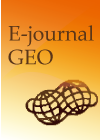Volume 2, Issue 1
Displaying 1-5 of 5 articles from this issue
- |<
- <
- 1
- >
- >|
Reports
-
2007Volume 2Issue 1 Pages 1-24
Published: 2007
Released on J-STAGE: June 02, 2010
Download PDF (7521K)
Proposals
-
2007Volume 2Issue 1 Pages 25-33
Published: 2007
Released on J-STAGE: June 02, 2010
Download PDF (676K)
Commentary Articles
-
2007Volume 2Issue 1 Pages 34-42
Published: 2007
Released on J-STAGE: June 02, 2010
Download PDF (400K) -
2007Volume 2Issue 1 Pages 43-59
Published: 2007
Released on J-STAGE: June 02, 2010
Download PDF (589K)
Geographical Education Articles
-
2007Volume 2Issue 1 Pages 60-69
Published: 2007
Released on J-STAGE: June 02, 2010
Download PDF (294K)
- |<
- <
- 1
- >
- >|
